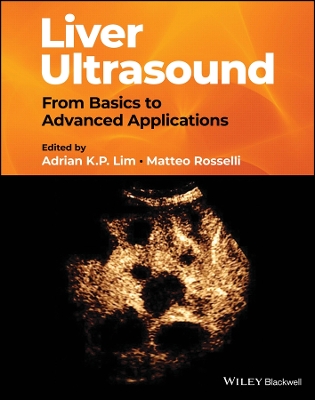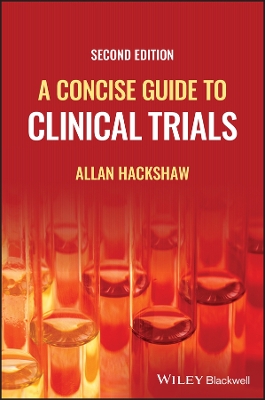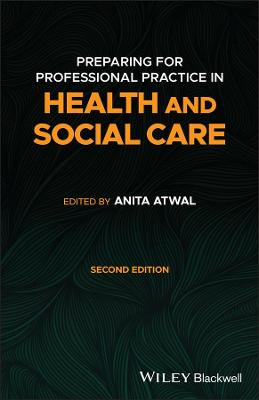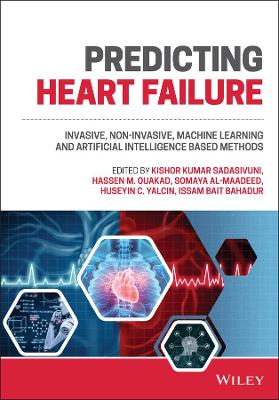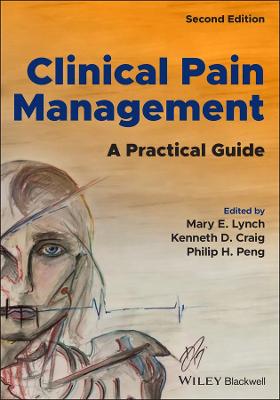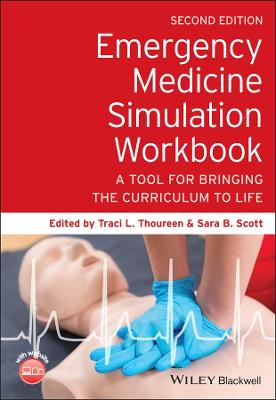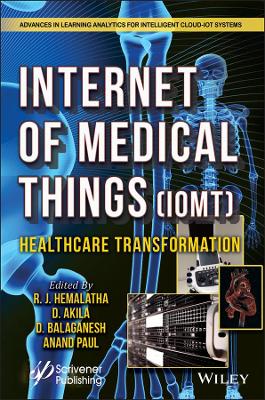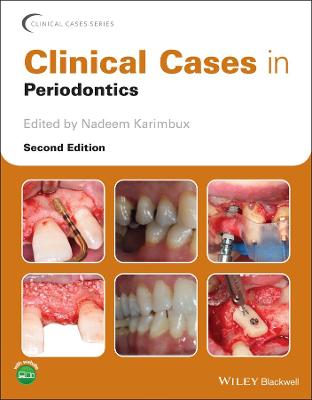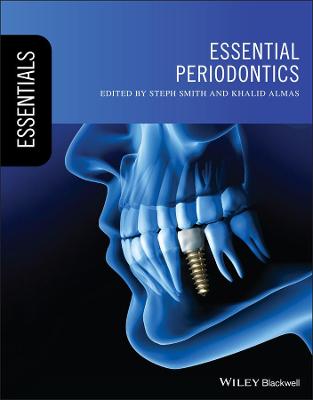Statistics at Square Two
 -15%
portes grátis
-15%
portes grátis
Statistics at Square Two
Jacques, Richard M.; Campbell, Michael J.
John Wiley and Sons Ltd
03/2023
208
Mole
Inglês
9781119401360
15 a 20 dias
1 Models, Tests and Data 1
1.1 Types of Data 1
1.2 Confounding, Mediation and Effect Modification 2
1.3 Causal Inference 3
1.4 Statistical Models 5
1.5 Results of Fitting Models 6
1.6 Significance Tests 7
1.7 Confidence Intervals 8
1.8 Statistical Tests Using Models 8
1.9 Many Variables 9
1.10 Model Fitting and Analysis: Exploratory and Confirmatory Analyses 10
1.11 Computer-intensive Methods 11
1.12 Missing Values 11
1.13 Bayesian Methods 12
1.14 Causal Modelling 12
1.15 Reporting Statistical Results in the Medical Literature 14
1.16 Reading Statistics in the Medical Literature 14
2 Multiple Linear Regression 17
2.1 The Model 17
2.2 Uses of Multiple Regression 18
2.3 Two Independent Variables 18
2.3.1 One Continuous and One Binary Independent Variable 19
2.3.2 Two Continuous Independent Variables 22
2.3.3 Categorical Independent Variables 22
2.4 Interpreting a Computer Output 23
2.4.1 One Continuous Variable 24
2.4.2 One Continuous Variable and One Binary Independent Variable 25
2.4.3 One Continuous Variable and One Binary Independent Variable with Their Interaction 26
2.4.4 Two Independent Variables: Both Continuous 27
2.4.5 Categorical Independent Variables 29
2.5 Examples in the Medical Literature 31
2.5.1 Analysis of Covariance: One Binary and One Continuous Independent Variable 31
2.5.2 Two Continuous Independent Variables 32
2.6 Assumptions Underlying the Models 32
2.7 Model Sensitivity 33
2.7.1 Residuals, Leverage and Influence 33
2.7.2 Computer Analysis: Model Checking and Sensitivity 34
2.8 Stepwise Regression 35
2.9 Reporting the Results of a Multiple Regression 36
2.10 Reading about the Results of a Multiple Regression 36
2.11 Frequently Asked Questions 37
2.12 Exercises: Reading the Literature 38
3 Multiple Logistic Regression 41
3.1 Quick Revision 41
3.2 The Model 42
3.2.1 Categorical Covariates 44
3.3 Model Checking 44
3.3.1 Lack of Fit 45
3.3.2 "Extra-binomial" Variation or "Over Dispersion" 45
3.3.3 The Logistic Transform is Inappropriate 46
3.4 Uses of Logistic Regression 46
3.5 Interpreting a Computer Output 47
3.5.1 One Binary Independent Variable 47
3.5.2 Two Binary Independent Variables 51
3.5.3 Two Continuous Independent Variables 53
3.6 Examples in the Medical Literature 54
3.6.1 Comment 55
3.7 Case-control Studies 56
3.8 Interpreting Computer Output: Unmatched Case-control Study 56
3.9 Matched Case-control Studies 58
3.10 Interpreting Computer Output: Matched Case-control Study 58
3.11 Example of Conditional Logistic Regression in the Medical Literature 60
3.11.1 Comment 60
3.12 Alternatives to Logistic Regression 61
3.13 Reporting the Results of Logistic Regression 61
3.14 Reading about the Results of Logistic Regression 61
3.15 Frequently Asked Questions 62
3.16 Exercise 62
4 Survival Analysis 65
4.1 Introduction 65
4.2 The Model 66
4.3 Uses of Cox Regression 68
4.4 Interpreting a Computer Output 68
4.5 Interpretation of the Model 70
4.6 Generalisations of the Model 70
4.6.1 Stratified Models 70
4.6.2 Time Dependent Covariates 71
4.6.3 Parametric Survival Models 71
4.6.4 Competing Risks 71
4.7 Model Checking 72
4.8 Reporting the Results of a Survival Analysis 73
4.9 Reading about the Results of a Survival Analysis 74
4.10 Example in the Medical Literature 74
4.10.1 Comment 75
4.11 Frequently Asked Questions 76
4.12 Exercises 77
5 Random Effects Models 79
5.1 Introduction 79
5.2 Models for Random Effects 80
5.3 Random vs Fixed Effects 81
5.4 Use of Random Effects Models 81
5.4.1 Cluster Randomised Trials 81
5.4.2 Repeated Measures 82
5.4.3 Sample Surveys 83
5.4.4 Multi-centre Trials 83
5.5 Ordinary Least Squares at the Group Level 84
5.6 Interpreting a Computer Output 85
5.6.1 Different Methods of Analysis 85
5.6.2 Likelihood and gee 85
5.6.3 Interpreting Computer Output 86
5.7 Model Checking 89
5.8 Reporting the Results of Random Effects Analysis 89
5.9 Reading about the Results of Random Effects Analysis 90
5.10 Examples of Random Effects Models in the Medical Literature 90
5.10.1 Cluster Trials 90
5.10.2 Repeated Measures 91
5.10.3 Comment 91
5.10.4 Clustering in a Cohort Study 91
5.10.5 Comment 91
5.11 Frequently Asked Questions 91
5.12 Exercises 92
6 Poisson and Ordinal Regression 95
6.1 Poisson Regression 95
6.2 The Poisson Model 95
6.3 Interpreting a Computer Output: Poisson Regression 96
6.4 Model Checking for Poisson Regression 97
6.5 Extensions to Poisson Regression 99
6.6 Poisson Regression Used to Estimate Relative Risks from a 2 x 2 Table 99
6.7 Poisson Regression in the Medical Literature 100
6.8 Ordinal Regression 100
6.9 Interpreting a Computer Output: Ordinal Regression 101
6.10 Model Checking for Ordinal Regression 103
6.11 Ordinal Regression in the Medical Literature 104
6.12 Reporting the Results of Poisson or Ordinal Regression 104
6.13 Reading about the Results of Poisson or Ordinal Regression 104
6.14 Frequently Asked Question 105
6.15 Exercises 105
7 Meta-analysis 107
7.1 Introduction 107
7.2 Models for Meta-analysis 108
7.3 Missing Values 111
7.4 Displaying the Results of a Meta-analysis 111
7.5 Interpreting a Computer Output 113
7.6 Examples from the Medical Literature 114
7.6.1 Example of a Meta-analysis of Clinical Trials 114
7.6.2 Example of a Meta-analysis of Case-control Studies 115
7.7 Reporting the Results of a Meta-analysis 115
7.8 Reading about the Results of a Meta-analysis 116
7.9 Frequently Asked Questions 116
7.10 Exercise 118
8 Time Series Regression 121
8.1 Introduction 121
8.2 The Model 122
8.3 Estimation Using Correlated Residuals 122
8.4 Interpreting a Computer Output: Time Series Regression 123
8.5 Example of Time Series Regression in the Medical Literature 124
8.6 Reporting the Results of Time Series Regression 125
8.7 Reading about the Results of Time Series Regression 125
8.8 Frequently Asked Questions 125
8.9 Exercise 126
Appendix 1 Exponentials and Logarithms 129
Appendix 2 Maximum Likelihood and Significance Tests 133
A2. 1 Binomial Models and Likelihood 133
A. 2 The Poisson Model 135
A2. 3 The Normal Model 135
A2. 4 Hypothesis Testing: the Likelihood Ratio Test 137
A2. 5 The Wald Test 138
A2. 6 The Score Test 138
A2. 7 Which Method to Choose? 139
A2. 8 Confidence Intervals 139
A2. 9 Deviance Residuals for Binary Data 140
A2. 10 Example: Derivation of the Deviances and Deviance Residuals Given in Table 3.3 140
A2.10.1 Grouped Data 140
A2.10.2 Ungrouped Data 140
Appendix 3 Bootstrapping and Variance Robust Standard Errors 143
A3.1 The Bootstrap 143
A3.2 Example of the Bootstrap 144
A3.3 Interpreting a Computer Output: The Bootstrap 145
A3.3.1 Two-sample T-test with Unequal Variances 145
A3.4 The Bootstrap in the Medical Literature 145
A3.5 Robust or Sandwich Estimate SEs 146
A3.6 Interpreting a Computer Output: Robust SEs for Unequal Variances 147
A3.7 Other Uses of Robust Regression 149
A3.8 Reporting the Bootstrap and Robust SEs in the Literature 149
A3.9 Frequently Asked Question 150
Appendix 4 Bayesian Methods 151
A4.1 Bayes' Theorem 151
A4.2 Uses of Bayesian Methods 152
A4.3 Computing in Bayes 153
A4.4 Reading and Reporting Bayesian Methods in the Literature 154
A4.5 Reading about the Results of Bayesian Methods in the Medical Literature 154
Appendix 5 R codes 157
A5. 1 R Code for Chapter 2 157
A5. 3 R Code for Chapter 3 163
A5. 4 R Code for Chapter 4 166
A. 5 R Code for Chapter 5 168
A5. 6 R Code for Chapter 6 170
A5. 7 R Code for Chapter 7 171
A5. 8 R Code for Chapter 8 173
A5. 9 R Code for Appendix 1 173
A5. 10 R Code for Appendix 2 174
A5. 11 R Code for Appendix 3 175
Answers to Exercises 179
Glossary 185
Index 191
1 Models, Tests and Data 1
1.1 Types of Data 1
1.2 Confounding, Mediation and Effect Modification 2
1.3 Causal Inference 3
1.4 Statistical Models 5
1.5 Results of Fitting Models 6
1.6 Significance Tests 7
1.7 Confidence Intervals 8
1.8 Statistical Tests Using Models 8
1.9 Many Variables 9
1.10 Model Fitting and Analysis: Exploratory and Confirmatory Analyses 10
1.11 Computer-intensive Methods 11
1.12 Missing Values 11
1.13 Bayesian Methods 12
1.14 Causal Modelling 12
1.15 Reporting Statistical Results in the Medical Literature 14
1.16 Reading Statistics in the Medical Literature 14
2 Multiple Linear Regression 17
2.1 The Model 17
2.2 Uses of Multiple Regression 18
2.3 Two Independent Variables 18
2.3.1 One Continuous and One Binary Independent Variable 19
2.3.2 Two Continuous Independent Variables 22
2.3.3 Categorical Independent Variables 22
2.4 Interpreting a Computer Output 23
2.4.1 One Continuous Variable 24
2.4.2 One Continuous Variable and One Binary Independent Variable 25
2.4.3 One Continuous Variable and One Binary Independent Variable with Their Interaction 26
2.4.4 Two Independent Variables: Both Continuous 27
2.4.5 Categorical Independent Variables 29
2.5 Examples in the Medical Literature 31
2.5.1 Analysis of Covariance: One Binary and One Continuous Independent Variable 31
2.5.2 Two Continuous Independent Variables 32
2.6 Assumptions Underlying the Models 32
2.7 Model Sensitivity 33
2.7.1 Residuals, Leverage and Influence 33
2.7.2 Computer Analysis: Model Checking and Sensitivity 34
2.8 Stepwise Regression 35
2.9 Reporting the Results of a Multiple Regression 36
2.10 Reading about the Results of a Multiple Regression 36
2.11 Frequently Asked Questions 37
2.12 Exercises: Reading the Literature 38
3 Multiple Logistic Regression 41
3.1 Quick Revision 41
3.2 The Model 42
3.2.1 Categorical Covariates 44
3.3 Model Checking 44
3.3.1 Lack of Fit 45
3.3.2 "Extra-binomial" Variation or "Over Dispersion" 45
3.3.3 The Logistic Transform is Inappropriate 46
3.4 Uses of Logistic Regression 46
3.5 Interpreting a Computer Output 47
3.5.1 One Binary Independent Variable 47
3.5.2 Two Binary Independent Variables 51
3.5.3 Two Continuous Independent Variables 53
3.6 Examples in the Medical Literature 54
3.6.1 Comment 55
3.7 Case-control Studies 56
3.8 Interpreting Computer Output: Unmatched Case-control Study 56
3.9 Matched Case-control Studies 58
3.10 Interpreting Computer Output: Matched Case-control Study 58
3.11 Example of Conditional Logistic Regression in the Medical Literature 60
3.11.1 Comment 60
3.12 Alternatives to Logistic Regression 61
3.13 Reporting the Results of Logistic Regression 61
3.14 Reading about the Results of Logistic Regression 61
3.15 Frequently Asked Questions 62
3.16 Exercise 62
4 Survival Analysis 65
4.1 Introduction 65
4.2 The Model 66
4.3 Uses of Cox Regression 68
4.4 Interpreting a Computer Output 68
4.5 Interpretation of the Model 70
4.6 Generalisations of the Model 70
4.6.1 Stratified Models 70
4.6.2 Time Dependent Covariates 71
4.6.3 Parametric Survival Models 71
4.6.4 Competing Risks 71
4.7 Model Checking 72
4.8 Reporting the Results of a Survival Analysis 73
4.9 Reading about the Results of a Survival Analysis 74
4.10 Example in the Medical Literature 74
4.10.1 Comment 75
4.11 Frequently Asked Questions 76
4.12 Exercises 77
5 Random Effects Models 79
5.1 Introduction 79
5.2 Models for Random Effects 80
5.3 Random vs Fixed Effects 81
5.4 Use of Random Effects Models 81
5.4.1 Cluster Randomised Trials 81
5.4.2 Repeated Measures 82
5.4.3 Sample Surveys 83
5.4.4 Multi-centre Trials 83
5.5 Ordinary Least Squares at the Group Level 84
5.6 Interpreting a Computer Output 85
5.6.1 Different Methods of Analysis 85
5.6.2 Likelihood and gee 85
5.6.3 Interpreting Computer Output 86
5.7 Model Checking 89
5.8 Reporting the Results of Random Effects Analysis 89
5.9 Reading about the Results of Random Effects Analysis 90
5.10 Examples of Random Effects Models in the Medical Literature 90
5.10.1 Cluster Trials 90
5.10.2 Repeated Measures 91
5.10.3 Comment 91
5.10.4 Clustering in a Cohort Study 91
5.10.5 Comment 91
5.11 Frequently Asked Questions 91
5.12 Exercises 92
6 Poisson and Ordinal Regression 95
6.1 Poisson Regression 95
6.2 The Poisson Model 95
6.3 Interpreting a Computer Output: Poisson Regression 96
6.4 Model Checking for Poisson Regression 97
6.5 Extensions to Poisson Regression 99
6.6 Poisson Regression Used to Estimate Relative Risks from a 2 x 2 Table 99
6.7 Poisson Regression in the Medical Literature 100
6.8 Ordinal Regression 100
6.9 Interpreting a Computer Output: Ordinal Regression 101
6.10 Model Checking for Ordinal Regression 103
6.11 Ordinal Regression in the Medical Literature 104
6.12 Reporting the Results of Poisson or Ordinal Regression 104
6.13 Reading about the Results of Poisson or Ordinal Regression 104
6.14 Frequently Asked Question 105
6.15 Exercises 105
7 Meta-analysis 107
7.1 Introduction 107
7.2 Models for Meta-analysis 108
7.3 Missing Values 111
7.4 Displaying the Results of a Meta-analysis 111
7.5 Interpreting a Computer Output 113
7.6 Examples from the Medical Literature 114
7.6.1 Example of a Meta-analysis of Clinical Trials 114
7.6.2 Example of a Meta-analysis of Case-control Studies 115
7.7 Reporting the Results of a Meta-analysis 115
7.8 Reading about the Results of a Meta-analysis 116
7.9 Frequently Asked Questions 116
7.10 Exercise 118
8 Time Series Regression 121
8.1 Introduction 121
8.2 The Model 122
8.3 Estimation Using Correlated Residuals 122
8.4 Interpreting a Computer Output: Time Series Regression 123
8.5 Example of Time Series Regression in the Medical Literature 124
8.6 Reporting the Results of Time Series Regression 125
8.7 Reading about the Results of Time Series Regression 125
8.8 Frequently Asked Questions 125
8.9 Exercise 126
Appendix 1 Exponentials and Logarithms 129
Appendix 2 Maximum Likelihood and Significance Tests 133
A2. 1 Binomial Models and Likelihood 133
A. 2 The Poisson Model 135
A2. 3 The Normal Model 135
A2. 4 Hypothesis Testing: the Likelihood Ratio Test 137
A2. 5 The Wald Test 138
A2. 6 The Score Test 138
A2. 7 Which Method to Choose? 139
A2. 8 Confidence Intervals 139
A2. 9 Deviance Residuals for Binary Data 140
A2. 10 Example: Derivation of the Deviances and Deviance Residuals Given in Table 3.3 140
A2.10.1 Grouped Data 140
A2.10.2 Ungrouped Data 140
Appendix 3 Bootstrapping and Variance Robust Standard Errors 143
A3.1 The Bootstrap 143
A3.2 Example of the Bootstrap 144
A3.3 Interpreting a Computer Output: The Bootstrap 145
A3.3.1 Two-sample T-test with Unequal Variances 145
A3.4 The Bootstrap in the Medical Literature 145
A3.5 Robust or Sandwich Estimate SEs 146
A3.6 Interpreting a Computer Output: Robust SEs for Unequal Variances 147
A3.7 Other Uses of Robust Regression 149
A3.8 Reporting the Bootstrap and Robust SEs in the Literature 149
A3.9 Frequently Asked Question 150
Appendix 4 Bayesian Methods 151
A4.1 Bayes' Theorem 151
A4.2 Uses of Bayesian Methods 152
A4.3 Computing in Bayes 153
A4.4 Reading and Reporting Bayesian Methods in the Literature 154
A4.5 Reading about the Results of Bayesian Methods in the Medical Literature 154
Appendix 5 R codes 157
A5. 1 R Code for Chapter 2 157
A5. 3 R Code for Chapter 3 163
A5. 4 R Code for Chapter 4 166
A. 5 R Code for Chapter 5 168
A5. 6 R Code for Chapter 6 170
A5. 7 R Code for Chapter 7 171
A5. 8 R Code for Chapter 8 173
A5. 9 R Code for Appendix 1 173
A5. 10 R Code for Appendix 2 174
A5. 11 R Code for Appendix 3 175
Answers to Exercises 179
Glossary 185
Index 191



